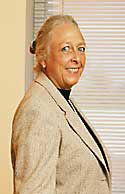Please forgive me readers for abandoning you for the last few weeks. But Tom (my partner) and I were asked by Cutter Consortium to write a couple of articles for them. Cutter normally charges for access to their posted articles. However, they have generously agreed to provide free access to you my blog readers. Those articles are now available at: click to go to Cutter website.
We chose two related topics. 1) The Agile IT Organization: Diffusion into the IT-Savvy Business, and 2) Agile Alignment. Both articles are posted on Cutter's website in their Business-IT Strategies Advisory Service Executive Update section as Vol. 8, No. 22 and Vol. 10 No. 21.
The articles are too long to post here. However, the Agile IT Organization deals with the evolution of the IT organization from Centralized, to Decentralized, to Dispersion, to Diffusion (with multiple iterations among the choices for most organizations). Centralized and Decentralized need no definitions. The Dispersed organization was defined by us (CogniTech) in the early 90's and is defined as: Dispersing some of the IT functions (for example single function development) into the individual business units. Diffusion as defined by Peter Weill and Sinan Aral of MIT's Center for Information Systems Research as diffusion of IT into the business where IT is done by business users. This requires an IT-Savvy organization defined by the above authors as "an organization in which there is extensive IT use for communication, more digitized business transactions, greater use of the Internet, higher IT skills of both business and IT staff, and more senior management involvement in IT decisions". We discuss the benefits, difficulties, dimensions, and requirements for an agile IT organization.
In our second article, we deal with agile IT alignment and deal with the issue of why (even when an organization can get aligned with business goals) is it so difficult to stay aligned. In essence, we conclude that: "In the grand scheme of things, organizations align to their external worlds by setting goals for achievement. Senior managers set the big goals, while operating managers translate these into their specific operating goals. In a perfect world, these would all point in the same direction and would never change. Reality poses a big problem, however, because external worlds do change, and goals change faster than you can imagine, even in big organizations. So if you had perfect alignment today, you might be out of whack six months or a year from now. Thus, IT-business alignment must be agile -- ever vigilant about shifting business goals." In this article we discuss the process by which IT can maintain alignment.
Please take the opportunity to read these articles in full on the Cutter Consortium website.
Monday, December 3, 2007
Subscribe to:
Comments (Atom)
